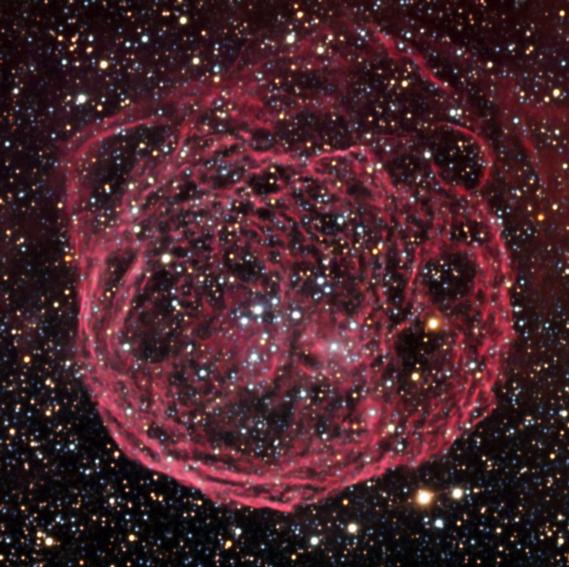Henize 70
 Click Image for full size view Warning: Full size images can be very large |
By |
Catalog |
Obj Type |
Location |
Date Taken: |
Harvey |
Henize 70 |
Nebula |
CTIO, Chile |
04-18-2008 |
Description |
||||
Massive stars (tens of times the mass of the Sun) profoundly affect their galactic environment. Churning and mixing the clouds of gas and dust between the stars, they leave their mark in the compositions and locations of future generations of stars and star systems. Dramatic evidence of this is beautifully illustrated in our neighboring galaxy, the Large Magellanic Cloud (LMC), by the lovely ring shaped nebula, Henize 70 (also known as N70 and DEM301). It is actually a luminous "superbubble" of interstellar gas about 300 lightyears in diameter, blown by winds from hot, massive stars and supernova explosions, its interior filled with tenuous hot expanding gas. These superbubbles offer astronomers a chance to explore this crucial connection between the lifecycles of stars and the evolution of galaxies. |
||||
Technical Details |
||||
Exposure Time: |
Ha 420 min RGB 75 min each | |||
Camera: |
Apogee Alta U47 | |||
Telescope: |
RCOS Carbon Truss 16 inch f/11.3 Ritchey-Chretien | |||
Mount: |
Software Bisque Paramount ME | |||
© 2024 Harvey Used with permission, No reproduction of these images are permitted without written approval from Harvey. |
||||
